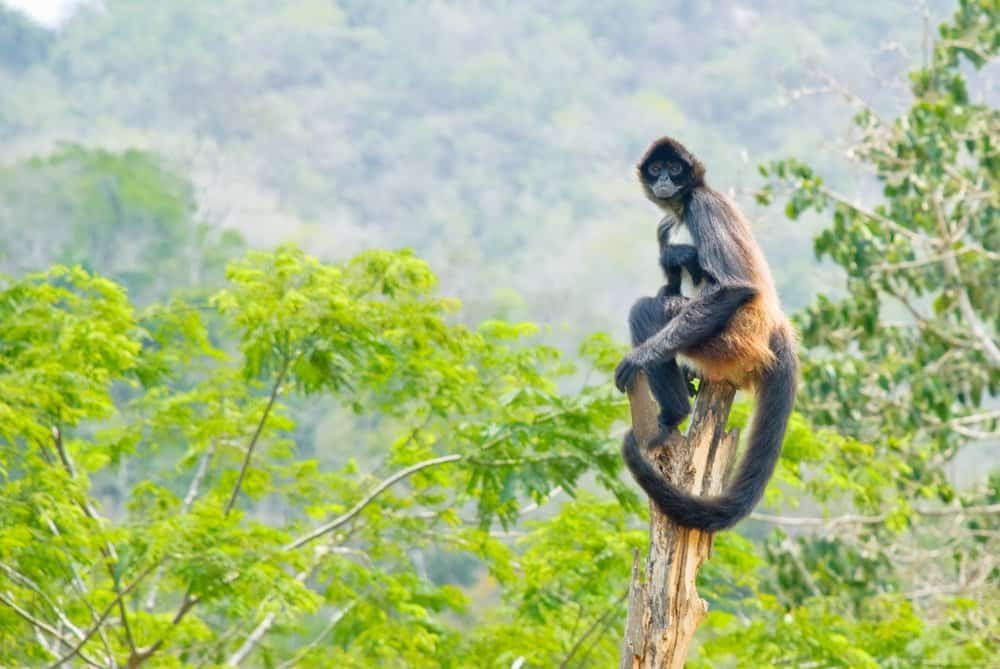Have you ever wondered How Many Spider Monkeys Are Left In World? There are currently many different species of spider monkeys scattered throughout the world, but unfortunately many of them are endangered or at risk.
The global population of the species is estimated at around 250 individuals. Found only in Ecuador’s Chocóan rainforests, these endangered primates are threatened by loss of their forest habitat, hunting and expanding oil palm pressures that threaten their very survival.
Table of Contents
How many Types Of Spider Monkeys Are There
There are actually seven different types of spider monkeys, all belonging to the genus Ateles. The most well-known and well-studied species is the black-handed spider monkey, also known as the Geoffroy’s spider monkey. Other species include the brown-headed spider monkey, white-bellied spider monkey, white-fronted spider monkey, Mexican spider monkey and the critically endangered Colombian spider monkey. Each of these species has unique characteristics and can be found in different regions throughout Central and South America.
Definition and Characteristics of Spider Monkeys
First, it’s important to understand what exactly a spider monkey is and what makes them unique. Spider monkeys belong to the genus Ateles and are a type of New World monkey found in Central and South America. They are known for their long limbs, dexterous hands, and prehensile tails that they use for gripping branches as they move through the trees.
Spider monkeys have distinctively large brains compared to other primates, making them highly intelligent animals. They also have a flexible diet that includes fruits, nuts, leaves, and insects.
How Many Spider Monkeys Are Left In World? Endangered Status of Spider Monkeys

Unfortunately, spider monkeys are facing many threats to their survival in the wild. Habitat loss from deforestation is one of the biggest issues they face, as their natural forest homes are being destroyed for agriculture and development.
This also disrupts their social structures and ability to find food.
Other major threats include hunting for their meat and capture for the illegal pet trade. In some areas, spider monkeys are also killed as pests because they can be destructive to crops.
The Impact Of Habitat Distribution, Hunting And illegal Trade
While the habitat distribution of spider monkeys used to be widespread throughout Central and South America, today it has drastically decreased due to human activities. This not only affects the survival of the species but also disrupts important ecological processes within these forests.
Hunting and illegal trade are also significant factors in the decline of spider monkey populations. In some areas, traditional beliefs and superstitions have led to the killing of spider monkeys for their perceived medicinal or mystical properties. The illegal pet trade also poses a threat, as spider monkeys are often taken from their natural habitat and sold as exotic pets.
A Quick Look Of Population Of Spider Money’s History
Unfortunately, the decline of spider monkey populations has been ongoing for decades. In recent years, conservation efforts have helped to slow this decline but it is still a very serious issue.
According to the International Union for Conservation of Nature (IUCN), three species are listed as critically endangered, one as endangered, and two as vulnerable. The remaining species do not yet have a specific conservation status, but many experts believe they are likely facing a similar fate.
Impact Of Climate Change On The Lifespan Of Spider Monkeys

In addition to the immediate threats facing spider monkeys, climate change is also predicted to have a significant impact on their survival in the long term. As temperatures rise and weather patterns become more unpredictable, it could lead to further habitat loss and disruption of their food sources.
How Many Spider Monkeys Are Killed?
Unfortunately, it is difficult to determine exactly how many spider monkeys are killed each year due to various factors such as habitat loss, hunting, and illegal trade. However, it is estimated that their population has declined by more than 50% over the past 45 years.
What Is The Main Cause Of Spider Monkeys Death?
The main cause of death among spider monkeys is human interference, whether it be through habitat destruction or direct harm from hunting or capture. However, disease and natural predators also play a role in their mortality rates.
How Many Spider Monkeys Are Left?
According to the International Union for Conservation of Nature (IUCN), there are currently six species of spider monkeys that are considered endangered or critically endangered, with others listed as vulnerable.
For example, the black-headed spider monkey is listed as critically endangered with only around 2,500 individuals left in the wild. The black-faced spider monkey has an estimated population size of less than 10,000 and is listed as endangered.
Overall, it’s difficult to determine an exact number of how many spider monkeys are left in the world due to their scattered populations and varying levels of study and protection. However, it’s clear that their numbers are rapidly decreasing.
Conservation Efforts For Spider Monkeys

Thankfully, there are many conservation efforts being made to protect spider monkeys and their habitats. National parks and protected areas have been established in some countries where these primates are found.
Additionally, there are also organizations focused on conservation and research of spider monkeys, such as the Spider Monkey Conservation Project.
The Importance of Conserving Spider Monkeys
Spider monkeys play an essential role in maintaining healthy rainforest ecosystems, as they help to disperse seeds and contribute to the growth of new plants. They also serve as important indicators of the overall health of their habitat.
Final Thoughts
The number of spider monkeys left in the world is constantly changing due to various threats and conservation efforts. It’s important for us to continue learning about these amazing creatures and supporting conservation efforts to ensure their survival for future generations to enjoy.
Read Also: How Many Golden Monkeys Are Left In The World?





